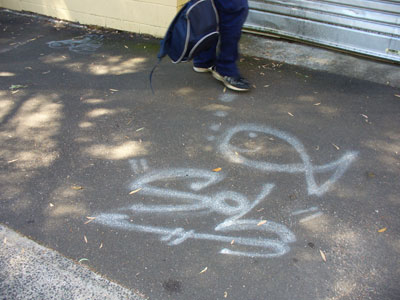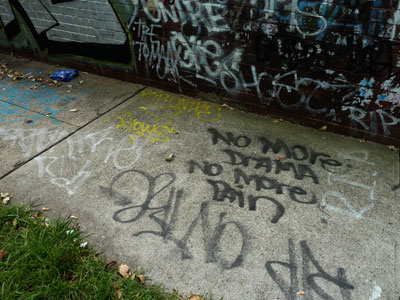
Photograph presumably – but not necessarily – taken in Paris in May 1968. Original source not known.
‘Beneath the pavement, the beach’ – it’s the most well-known slogan from the May 1968 uprising in Paris. But what if it is misguided? What if the pavement is the beach?
I think the pavement is a littoral zone with tides of people and their vehicles washing backwards and forwards over it in their daily cycles of movement. Searching for graffiti on the pavement is like scavenging for sea drift on the sand.
Novelist Tim Winton, the author of Cloudstreet and Breathe, says he is ‘forever the beachcomber’. Passages in his book Land’s Edge  show just how much the search for pavement graffiti resembles beachcombing.
‘A long bare beach, like the sea itself, is capable of many surprises. The unexpected is what I’m after when I go trudging along the firm white sand […] it’s the possibility of finding something strange that keeps me walking …
‘From the distance every found object is merely a black mark on the sand, and half the pleasure of beachcombing lies in wondering, anticipating the find …
‘Yet however comforting and peaceful beachcombing is, it ends up, like the sea, as disturbing as it is reassuring. In dark moments I believe that walking on a beach at low tide is to be looking for death, or at least anticipating it. You will only find the dead, the spilled and the cast-off […] The beachcomber goes looking for trouble, for everything he finds is a sign of trouble.’
Tim Winton, Land’s Edge, Sydney: Picador, 1998, pp. 98-101.


[…] our shared fascination with bluebottles). The post on her blog that most inspired me can be found here, and her gratifying and elegant response to the work […]
[…] blog. Megan Hicks studies pavements and the messages on them with a passion that inspires. Her piece on the parallels between pavements and beaches (of course!) was what drew me in. And she shared […]